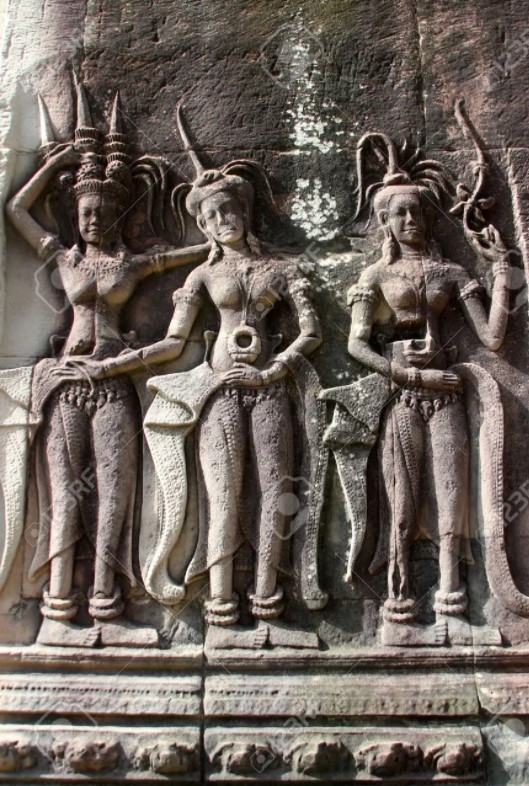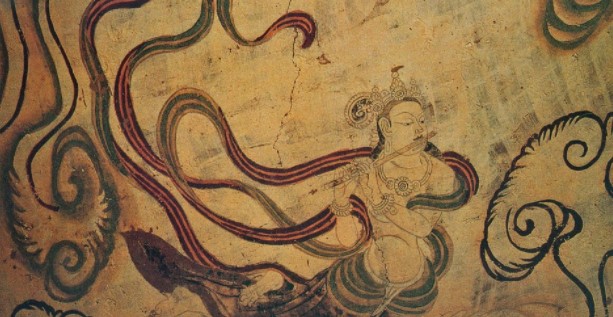The Apsara Began Dreaming Up Ways to Kill the Singer
Dreamy tryst with Rag Basant
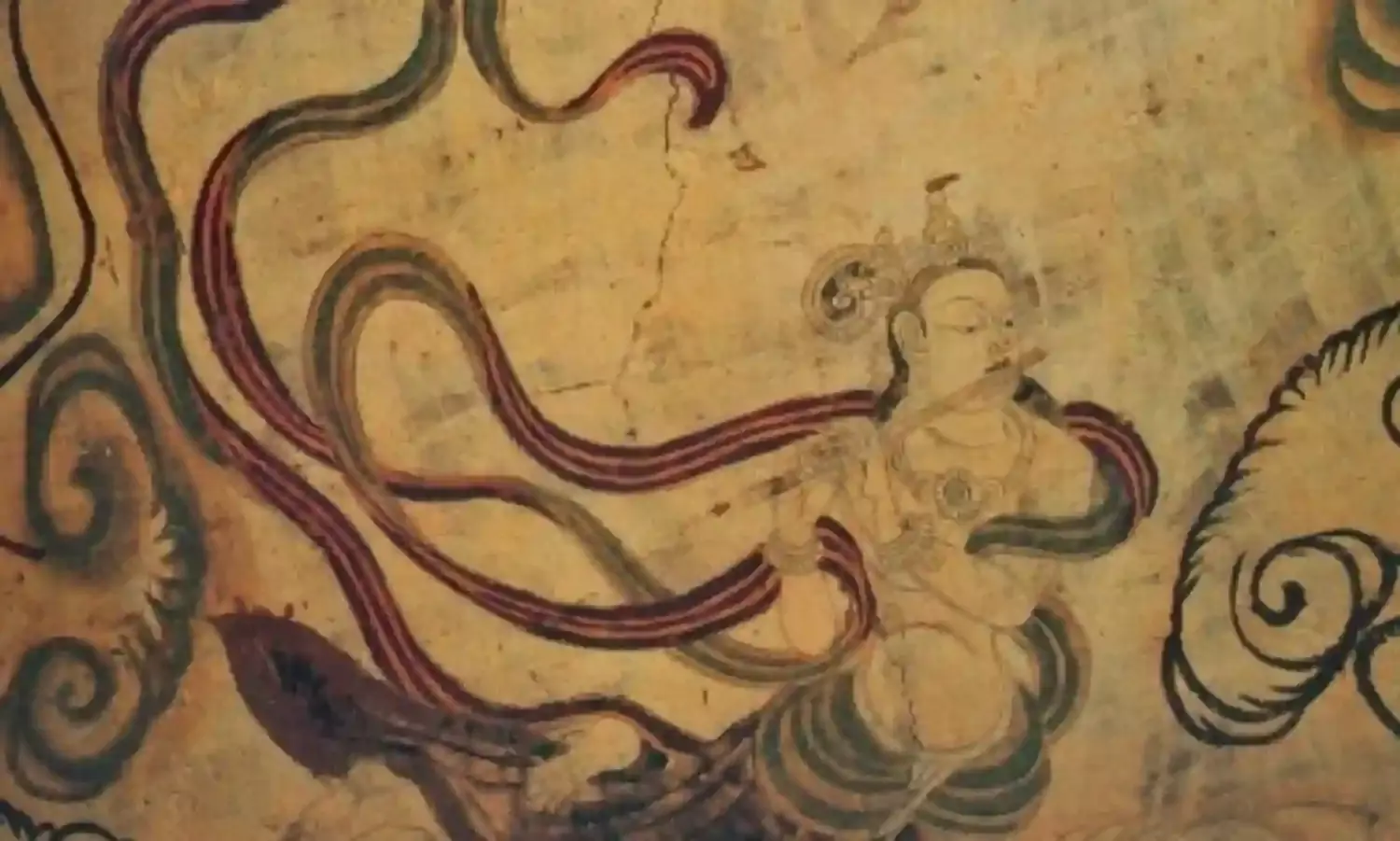
It was a wintry December evening some six years ago that I chanced to meet young Shankar Chitre on the stone steps of Ahilyabai Ghat in Banaras, a city where many Hindustani Gharana of music bloomed over the centuries together with their legends.
In Banaras, one can hear folklore told and retold for centuries together pertaining to Apsaras and Gandharvas and their nexus with different styles of dance and Hindustani Raag. Chitre narrated to me one such story of Rag Basant.
Rag Basant is meant to welcome the Spring Season: the Basant. Said to be a Carnatic Raag originating from Vakulabharanam, it was blended with the Hindustani tradition to become known as Rag Basant, with variations like Basant Bahar, Basant Hindol and Shudh Basant.
A wave of this genre might have come from Persia centuries ago as it tallies in stylistic pattern with Maqam Hijaz. In Guru Granth Sahib also we find reference to this Rag. It is at least 1200 years old.
Basant was one of the pasandida (favoured) raags of Wajid Ali Shah, Nawab of Oudh under whose kingdom Kashi and Banaras fell.
I also adore this Raga, particularly the song ‘Phagwa Brij Dekhan Ko Chalo Ri…’
The oldest record of this song that I could find was by Ustad Abdul Karim Khan. His eight minute song was recorded some 97 years ago yet it sounds as if recorded just day before yesterday.
Khansahab was instrumental in developing the Kirana Gharana of Hindustani songs. The gharana traces its origin to Gopal Nayak who sang in the court of Allauddin Khilji together with Amir Khusro.
Both Gopal Nayak and Amir Khusro practised Rag Basant. Amir Khusro sang Rag Basant and Rag Bahar in the presence of Hazrat Nizamuddin Aulia.
Incidentally, Ustad Abdul Karim Khan sang Rag Darbari just before his death at a bench on the platform of Singaperumalkoil railway station, near Chennai.
Old records say he was journeying by train to Pondicherry at the invitation of Sri Aurobindo, a revolutionary turned philosopher from Bengal, to perform at his Ashram.
At Chingleput he suddenly experienced severe chest pain. He was brought down from the train at Singaperumalkoil and laid on a bench. He then recited the Kalma and sang a little in the form of Rag Darbari. He could not complete what he tried to sing.
The date was October 27, 1937.
On that day, every radio station across Imperial Hindustan interrupted all programmes to announce the death of Abdul Karim Khan.
Let us return to the Ahilyabai Ghat where Shankar Chitre narrated me a legend of Apsara Chandra and her earthling lover Madhavsen.
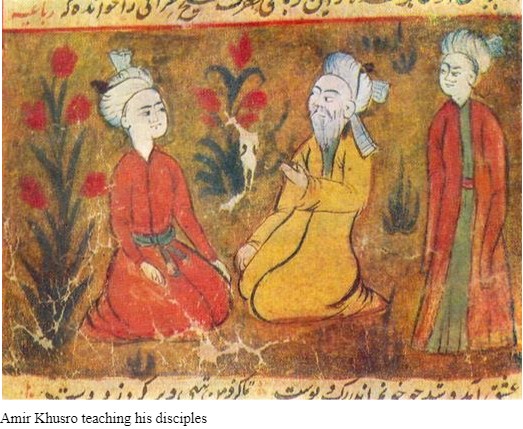
Can you believe Chandra killed her lover so that he could be her consort forever in Gandharva Lok?
Chandra wove magic through her dance. She also learnt to dance on Rag Basant rendered by Madhavsen.
Chitre, a young Marathi Manus of about 25 whose family settled in Banaras from Pune some 217 years ago, shared with me the story that he had heard from his Ustadji, Chhote Ali who was some 93 years old.
The tradition of Apsara, Gandharva, Hindustani music and musical instruments in Varanasi is very old. Findings of the Archaeological Survey of India during its various excavations of different ages prove the antiquity of the Apsara tradition here.
The ASI unearthed a large number of figurines of Gandharvas and Apsaras playing various musical instruments proving their interconnection with the Hindustani music of Banaras Gharana.
The early medieval Puranas also refer to Kinnars, Gandharvas and Apsaras living in twin cities named Kashi–Varanasi. They played instrumental music and songs in different Ragas.
The Banarasi musical and dance Gharanas attained great heights in the 16th century during the rule of King Govind Chandra. After this too the Kings of Awadh further promoted Hindustani ragas and dances.
In Wajid Ali Shah’s time the twin cities became a vibrant centre of folk and classical songs including Chaiti, Kajri, Dhamar, Hori and Chaturanga. Both indoor Jalsa and outdoor singing concerts were held on boats floating on the Ganga.
It is said that nothing is new here. Even the new generation of singers and musicians are thought to follow the ancient tradition of Meer Rustam, Pandit Ram Sahai, Waris Ali, Akbar Ali, Nisar Khan, Sadiq Ali and Ashiq Ali Khan.
These past masters belonged to the courts of the Awadh Nawabs, Mughal kings and other Raja-Maharajas and Sultan-Nawabs of the Deccan and North India. It is said that even the tabla style developed by Pandit Ram Sahai 200 years ago is still followed.
Pandit Ram Sahai was a disciple of Ustad Modhu Khan of Lucknow.
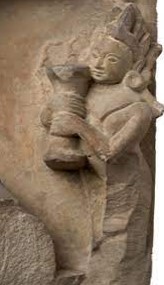
Here an interesting fact needs to be recorded. Nearly 200 years ago, there was a shuffle of singers, dancers and musicians from Varanasi, Allahabad, Kanauj, Agra and Rampur to various other parts of Hindoostan.
Chitre enlightened me with this information.
How I met him?
That is quite interesting.
Chitre was sitting just a few feet away from me. Suddenly, his handset rang. He took the call to tell someone he cannot come today as he has to go to meet his Ustad Ji late evening.
The very word Ustad Ji made me curious as I knew Guru and Ustad means either a dance or music teacher. I just spontaneously questioned if he is learning music?
Yes, he said.
I don’t know why but I asked him if he can present a Mukhda (beginning of a classical song) in Rag Basant or Basant Bahar, may be.
He smiled and without replying hummed ‘Phagwa Brij Dekhan Ko Chalo Ri…’
The song that I like the most. Can we call it a coincidence? May be…
Are you a vocalist too?
No, I am a journalist!
I see… why did you ask me to present Rag Basant?
Because I like it…
Then you, perhaps, have heard the legend of Chandra and Madhavsen?
No, I said. But I turned extremely curious know the legend and requested him to narrate it to me.
Well, my Ustad Ji Chhote Ali once told me an ancient tale that goes with Rag Basant. He is about 93 now and belongs to a musician family whose ancestors were said to be disciples of Muhammad Ghaus from whom Tannu or Tan Sen first took lessons in music.
Muhammad Ghaus was believed to have referred Tannu to Swami Haridas and he became Tan Sen in the court of Emperor Akbar.
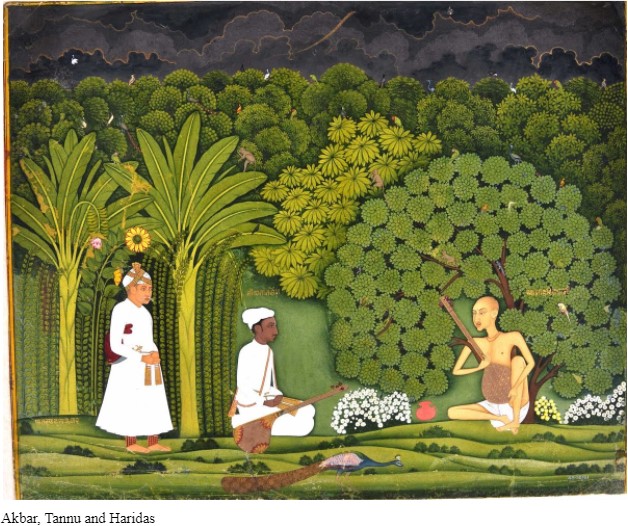
Chitre began a story of Rag Basant:
Centuries ago when Varanasi was a young Janapada, an Apsara by the name Chandra (moon) descended in the city in the form of a beautiful maiden. She was in search of a consort who could sing and accompany her in dance in Gandharva Lok.
In other words, to become a Gandharva that male musician consort would have to die.
What a dangerous proposition, is it not?
Chandra wandered around Varanasi for her consort for quite a long time but found none. She was planning to return to Gandharva Lok.
Then one evening something happened during the season of Basant.
A disheartened Chandra was moving in the forest near the River Ganga. Suddenly, she stood still. A male voice was singing a honeyed song. An ethereal musical spell bound Apsara Chandra. She started searching the source of this music. A little ahead, inside the forest, a young man was singing seated under a Kadam tree, a tree beloved of Lord Krishna.
Is he a Gandharva? Chandra thought a male human being just could not be so handsome. Can an earthling sing like this? Hardly possible! He must be a Gandharva like her, Chandra concluded.
She moved towards him. He was singing with his eyes closed. This is a Rag new to her. But it is wonderful, simply wonderful.
Chandra stood right before him but he was so engrossed in the song that he could hardly feel her presence.
The song ended and he opened his eyes to find a beautiful maiden before him.
‘Who are you, Devi?’
‘I am Chandra, a singer and dancer in a royal court in Ujjaini.’ She hid her actual identity of being an Apsara. ‘What was the Rag your song was set in?’
Rag Basant!
What is your name?
Madhavsen!
What is your name?
Chandra.
Can you dance in this Rag that I may sing?
Why not?
Well, he replied, in just about a week there would be a Basant Utsav in Varanasi in which men and women would dance to welcome Basant. I will be singing in Rag Basant for them.
Chandra said she would be very happy to dance.
With this deal, the dangerous nexus of an earthly Man with unearthly Apsara began which was soon to end.
Chandra was determined to have Madhavsen. But how? He is mortal, she is immortal. He could be made immortal only by entering Gandharva Lok. For that, of course, he would have to die in Marta Loka: earth.
Yes, he has to die, thought Chandra. She just could not allow the loss of such a talented singer and handsome man.
The Apsara began dreaming up ways to kill the Singer.
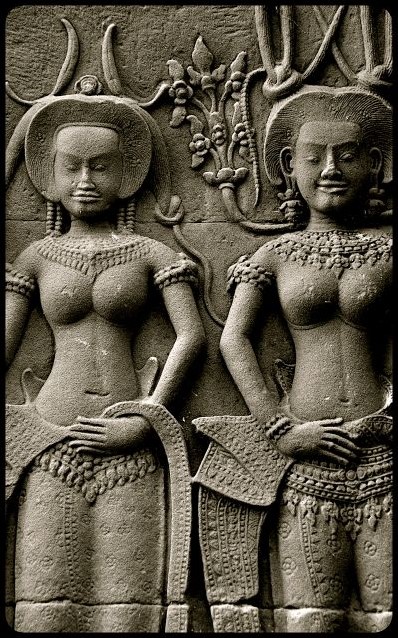
It became a daily affair for Madhavsen and Chandra to meet at the forest just after the sun set. He would sing and she would dance.
But Chandra was getting impatient to get back to Gandharva Lok with her consort forever. She was eagerly waiting for Basant Panchami: that would be the last day of Madhavsen in Varanasi.
Every evening, Chandra asked Madhavsen how many days are left of Basant Panchami?
Why do you ask this question to me every day as if that would be the last day of life in Martaloka?
Well, my handsomest man, you can guess!
Shankar Chitre really wove a Jaadu (spell, magic) with his story. I suddenly had a great desire to hear a Rag Basant Bandish set in ancient lyrics.
He smiled and without replying, began one of the ancient-most known lyrics on this Rag created by Amir Khusro. It runs like this:
Ban, Ban Phool Rahi Sarson
Amwa Phute, Tesu Phoole
Koyal Bole Dar Dar
Aur Gauri Karat Shringer…
Oh, what a nice scene Khusro has created!
Khusro, the first Hindavi poet, truly created a poetic canvas with actual description of Basant Ritu with its ripe and floral beauty.
It means the forests are wearing a yellow scarf as mustard flowers have bloomed. It is the season that Mangoes ripen and Tesu flowers smile. The Koyal is singing in the twigs of trees. The womenfolk wear all the fineries and make themselves up to welcome Basant.
Bravo Khushro, I bow before Thee!
Finally, the day of Basant Panchami arrived in Kashi–Banaras.
Varanasi’s Basant Utsav is over. It is now midnight. Shortly, Chandra will kill Madhavsen. He will become a Gandharva and the inseparable consort of Chandra Apsara.
Can we not spend a little more time on the banks of River Ganga?
But it is already getting late…
Before Madhavsen could finish his words, Chandra nearly dragged him to the brink of the river.
How about we swim…?
But I cannot swim, replied Madhavsen.
His reply eased Chandra’s plan.
She was holding his hand. Suddenly, with the swiftness of lightning, she hurled him into the river. Madhavsen was sinking… sinking… and Chandra jumped into the river to embrace him and quicken the process of his mortal end.
Madhavsen is dead. With her magical spell, the Apsara took his spirit to Gandhar Lok.
She now has an eternal consort in the form of Gandharv Madhavsen.
Smiling at me, Shankar Chitre stood up as he had to catch an auto-rickshaw to reach his Ustadji’s house. I also have to get back to the hotel near Varanasi Railway Station.
Sky was dark. It looked like Aanchal of a black Banarasi Saree studded with silvery stars.
Looking at the stars up above the sky, I suddenly shuddered! Could one of them be Chandra, the killer Apsara watching me?
